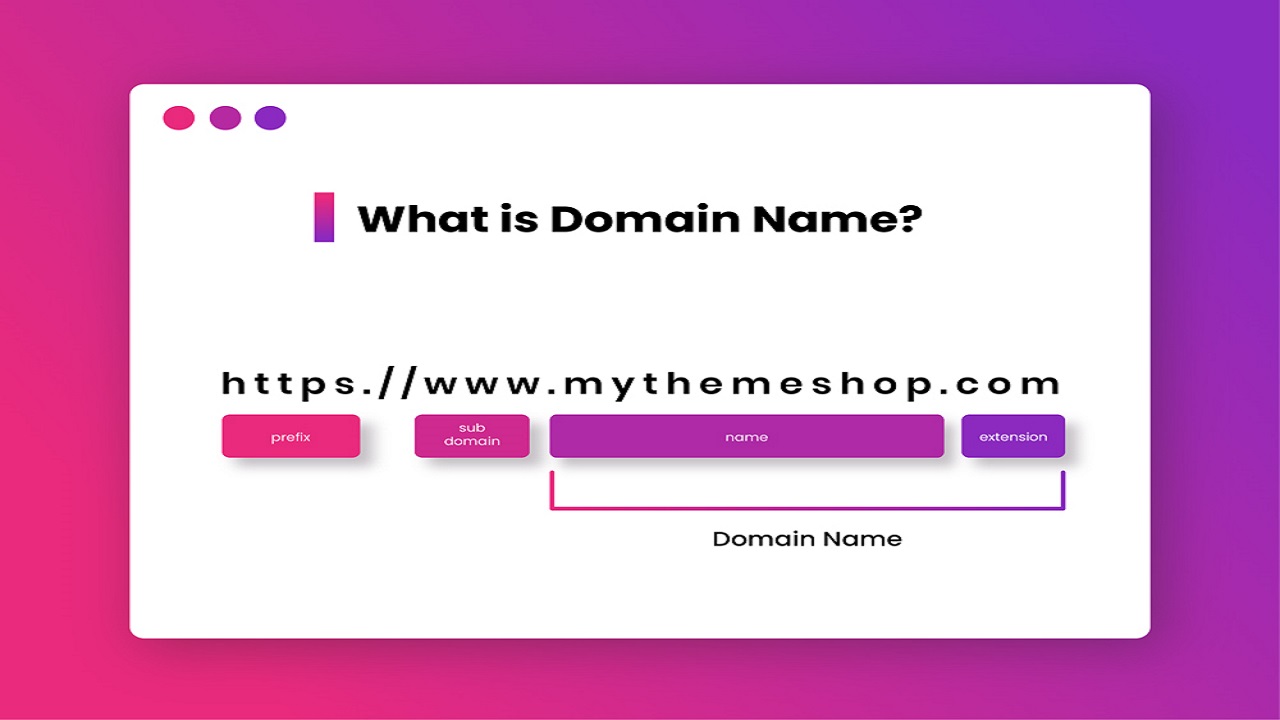Let’s imagine the internet as a huge city. Every website is like a house or shop in that city. But how do you find these websites? That’s where a domain comes in. A domain name is like your street address it helps people find your website online.
“Your domain name is your digital identity it’s how the world finds you online, just like your home address guides people to your doorstep.”
In this article, we’ll break down everything about domain names, how they work, and how you can get your own-no tech dictionary required.
Introduction to Domains – The Address of the Internet
A domain name is the unique name that identifies a website. When someone types your domain name into their browser (like www.google.com), they’re instantly taken to your website. Easy, right?
Without domain names, we’d all be typing confusing IP addresses like 192.168.1.1 into our browsers. Domains make the internet user-friendly and human-readable.
Why a Domain Name is Essential for Every Website
Would you trust a business without a name or location? Probably not. A domain name adds:
- Credibility to your brand
- Professionalism to your website
- Recognition for marketing
- Access for users worldwide
Whether you’re a blogger, entrepreneur, or online store owner, a domain is your first step to being found online.
How Domain Names Work (Simplified)
Here’s what happens when you type a domain name into a browser:
- The browser contacts the Domain Name System (DNS), like a giant phone book.
- DNS looks up the domain and finds the server (IP address) where the site lives.
- Your browser loads the website from that server.
All this happens in seconds-tech magic behind the scenes!
Structure of a Domain Name
A domain name is made of three main parts:
- www – Optional prefix (stands for World Wide Web)
- Name – Your custom name (
facebook,youtube,yourbrand) - Extension – Also called a TLD (
.com,.org,.in)
For example, in www.example.com:
exampleis the domain.comis the extension
Difference Between Domain Name and URL
People often confuse domain names and URLs. Let’s clarify:
- Domain Name:
example.com - URL (Uniform Resource Locator):
https://www.example.com/about-us
The URL is the full web address that includes:
- Protocol (
https://) - Subdomain (
www) - Domain name
- Path (
/about-us)
Domain Name vs Web Hosting
You need both to run a website.
- Domain Name = The address of your site
- Web Hosting = The place where your site lives
Think of it like this: The domain is your shop’s address; hosting is the building where the shop is located.
Types of Domain Names
Not all domains are created equal. Let’s break them down.
Top-Level Domains (TLDs)
These are the extensions like .com, .org, .net. They’re managed by international registries and are the most common.
.com= Commercial.org= Organizations.net= Networks
Country Code TLDs (ccTLDs)
These are specific to countries:
.in– India.uk– United Kingdom.us– United States
They’re great for local businesses targeting a specific country.
Generic TLDs (gTLDs)
These are newer and include creative endings like:
.online.tech.shop.blog
They offer branding flexibility if .com is taken.
Subdomains
A subdomain comes before the main domain. Example: blog.example.com
Uses:
- Separate sections (blog, store, help center)
- Testing environments
- Different language versions
How to Choose the Right Domain Name
Picking a name? Follow these tips:
- Keep it short and simple
- Make it easy to spell
- Avoid numbers or hyphens
- Use keywords if possible
- Make it brandable
Example: bestcakesdelhi.com is better than 123-my-cake-site.biz
Domain Name Registration Process
Here’s how to get a domain:
- Visit a domain registrar (like GoDaddy or Namecheap)
- Search your desired domain name
- If available, add to cart and checkout
- Set up auto-renewal (optional but recommended)
- Connect it to your website hosting
Done! You now own a piece of internet real estate.
Top Domain Registrars in 2025
Here are some trusted registrars:
- GoDaddy
- Namecheap
- Google Domains
- Bluehost
- Hostinger
Look for affordable pricing, good support, and easy-to-use dashboards.
Things to Consider Before Buying a Domain
Before hitting “buy,” think about:
- Is the name memorable?
- Is it future-proof for business growth?
- Is the social media handle available?
- Is the extension trustworthy?
- Are similar names owned by competitors?
Do your homework-it’s your brand’s first impression.
Can I Buy a Domain Name Forever?
Not exactly. Domains are rented annually. You can:
- Register for up to 10 years at once
- Set auto-renew
- Protect your name by buying long-term
If you don’t renew, someone else could grab it. Ouch.
How to Protect Your Domain Name
- Enabling WHOIS privacy protection
- Setting up 2FA (Two-Factor Authentication)
- Turning on auto-renewal
- Using a strong password
Losing your domain could cost you traffic, trust, and sales.
What Happens When a Domain Expires?
If your domain expires:
- Your website goes offline
- You enter a grace period (usually 30 days)
- If still unpaid, it becomes available to the public
- Someone else can buy it
To avoid this, always renew on time!
A domain name is more than just a URL-it’s your identity online. It tells the world who you are and what you offer. Whether you’re starting a blog, an online store, or a portfolio, your domain sets the stage.
Choose wisely. Keep it simple. And don’t be afraid to make it memorable. It’s your first step toward building your brand online.
FAQs
1. What is a domain name in simple terms?
A domain name is your website’s address-what people type to find your site online, like google.com.
2. Is domain the same as hosting?
Nope. Domain is your address, hosting is where your website files live.
3. How much does a domain name cost?
It usually costs between $10–$20 per year, depending on the extension.
4. Can I change my domain later?
Yes, but you’ll need to update everything linked to the old domain-emails, links, SEO, etc.
5. What is the best extension: .com, .net, or .org?.com is most popular and trusted, but .net and .org are great for nonprofits and tech brands.




